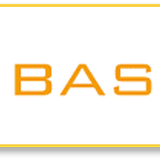Struktur Modal Pendekatan Dinamis Perusahaan Otomotif Dan Komponennya Saat Krisi Global 2008
DOI:
https://doi.org/10.24912/je.v21i3.24Abstract
The increase in business during the global crisis to the challenge of funding and capital structure dynamic analysis approach is suitable for the observation of the capital structure. This study is intended to demonstrate the influence of profitability, firm size, cost of equity, debt cost, firm value volatility, leverage and speed adjustment and optimal capital structure. By using the auto company's financial statements and its components in a data 2008-2012 profitability, firm size, cost of equity, debt cost, and firm value volatility analyzed using multiple regression analysis to examine the effect on the capital structure and leverage optimal data and speed adjustment analyzed with method Generalized Moment Method (GMM) to examine the achievement of optimal capital structure and speed of achievement of optimal capital structure. The results found that the only significant profitability and firm size negatively affects the capital structure, the cost is being equity, debt cost, and firm value volatility not significantly affect their capital structure. The automotive industry and its components were successfully adjusted its capital structure to an optimal position, but the adjustment is slow. In a global crisis of capital structure adjustment to the optimal capital structure is progressing slowly in view of the difficulty of finding external funding sources.
Downloads
Published
How to Cite
Issue
Section
License
Copyright (c) 2017 Jurnal Ekonomi

This work is licensed under a Creative Commons Attribution-NonCommercial-ShareAlike 4.0 International License.
This journal provides immediate open access to its content on the principle that making research freely available to the public supports a greater global exchange of knowledge.

This work is licensed under a Creative Commons Attribution-NonCommercial-ShareAlike 4.0 International License.


















